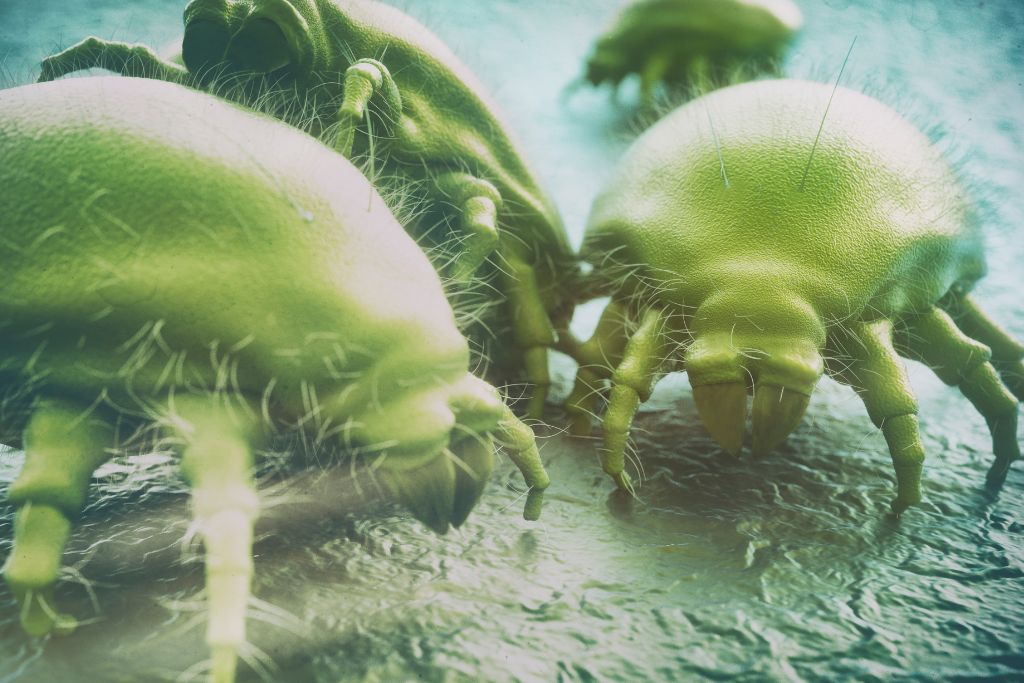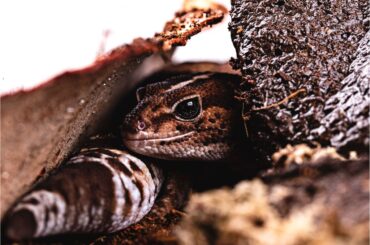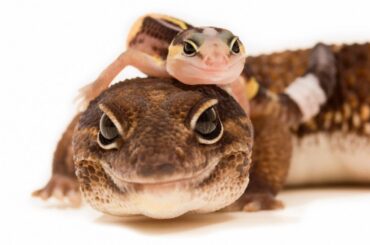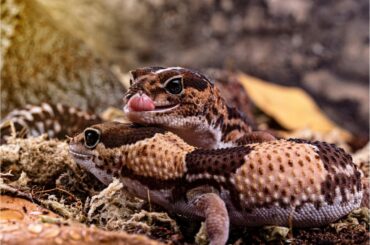Do you care about the well-being of your leopard gecko? Then you’ve come to the right place! Leopard gecko mite control is a major topic covered in this essay.
Seeing to the needs of your gecko is very important to you. Because of this, we’ve compiled some information to assist you in warding off mites and treating an infected gecko.
Small as they are, mites can cause significant distress to your gecko. These parasites will cause your gecko great discomfort by adhering to its skin. If you overlook the issue, it may persist and even impair your gecko’s health.
Let’s figure out how to keep those pesky insects away from your gecko so that they can live a long, happy life.
Leopard Gecko Mites
Mites are tiny bugs that can cause significant problems for your leopard gecko. They suck your pet’s blood, leading to stress and skin issues. In severe cases, these parasites can even cause infections.
You might wonder how your gecko got mites in the first place. Well, these pests can come from various sources. Dirty bedding, contaminated food, or even another infected gecko can introduce mites into your pet’s environment.
Preventing mites starts with good hygiene. Regularly clean your gecko’s habitat and wash your hands before handling your pet. Being vigilant can stop these parasites from turning your gecko’s life into a living nightmare.
Common Mites in Leopard Geckos
Understanding the variety of mites that can infest your leopard gecko is essential. Different types call for unique treatment methods. So, let’s delve deeper into identifying these troublesome parasites.
- Ophionyssus Natricis: Commonly called snake mites, they often plague leopard geckos. These blood-sucking pests can stress out your pet significantly.
- Acarus: These mites are less common but can still pose a threat. They usually affect the skin and can lead to infections if not treated.
- Trombiculidae: Commonly called “chigger mites,” these parasites don’t suck blood but can cause skin irritation. They’re usually found in outdoor environments and are less likely to infest indoor pets.
Signs and Symptoms
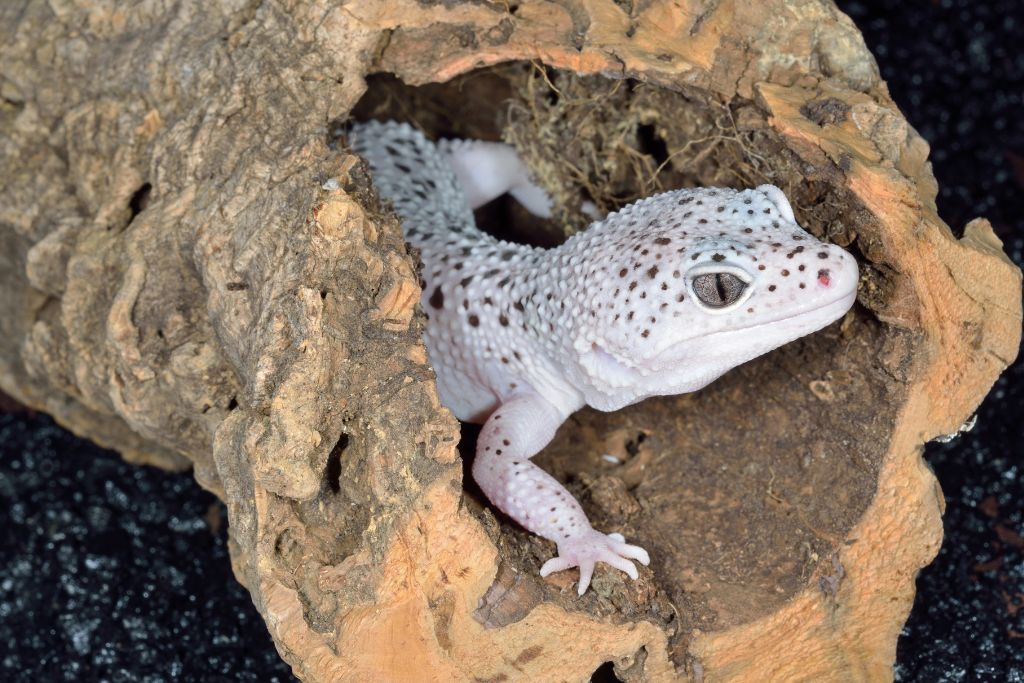
Knowing the types of mites that can affect your leopard gecko is just the first step. Spotting the signs of an infestation early can make all the difference in effective treatment. Let’s see how you can tell if your gecko has a mite problem.
- Visible Mites: The most obvious sign is seeing the mites themselves. They look like tiny black or red dots on your gecko’s skin.
- Restlessness: Mites could be the culprit if your gecko seems more fidgety than usual. The parasites cause discomfort, making your pet restless.
- Skin Discoloration: Mites can cause changes in your gecko’s skin color. Look for unusual dark or red patches.
- Frequent Shedding: Mites irritate the skin, which can lead to more frequent shedding cycles for your gecko.
- Scratching and Rubbing: Your gecko might start scratching itself against objects or rubbing its body on the ground to relieve the itch.
- Loss of Appetite: Mites can stress out your gecko, reducing appetite.
Causes and Sources of Mite Infestations
You’ve learned how to spot mite infestations, but where do these pests come from? Understanding the sources can help you prevent future outbreaks. Let’s delve into how your leopard gecko could end up with mites.
- Contaminated Substrate: Sometimes, the bedding material you use can harbor mites. Always buy from reputable sources and consider baking or freezing the substrate to kill parasites.
- Infected Pets: If you have multiple reptiles, one infected pet can spread mites to others. Quarantine new pets and treat them for mites before introducing them to your existing animals.
- Pet Stores: Unfortunately, pet stores can sometimes be a source of mites. Always inspect new geckos carefully before bringing them home.
- Outdoor Exposure: If you let your gecko roam outside, it could pick up mites from the soil or plants. Limit outdoor time and always check for mites afterward.
- Second-hand Items: Used tanks, decorations, or equipment can carry mites. Disinfect these items thoroughly before using them.
- Human Transmission: Believe it or not, you can bring mites into your home on your clothing or shoes. Change and wash up if you’ve been in an area where you suspect mite exposure.
Prevention Strategies
Now that you know mite causes and symptoms, let’s talk about prevention. Maintaining mite control is easier than treating an infestation. Protect your leopard gecko with these practical suggestions.
- Quarantine New Pets: Before introducing a new gecko to your existing pets, keep it in a separate enclosure for at least two weeks. This gives you time to spot any signs of mites.
- Choose Substrate Wisely: Opt for mite-resistant substrates, like paper towels or reptile carpets. These are easier to clean and less likely to harbor mites.
- Regular Cleaning: Make a habit of cleaning the enclosure at least once a week. Remove waste, scrub surfaces, and replace the substrate.
- Handwashing: Always wash your hands before and after handling your gecko. This reduces the risk of transferring mites.
- Inspect Food and Supplies: Thoroughly check for mites before adding anything new to the enclosure. This includes food, water dishes, and decorations.
- Limit Outdoor Exposure: If you take your gecko outside, keep the outings short and always inspect for mites afterward.
- Disinfect Second-hand Items: If you buy used equipment, disinfect it thoroughly before placing it in the enclosure.
How to Get Rid of Mites on Leopard Geckos: Treating Mite Infestations
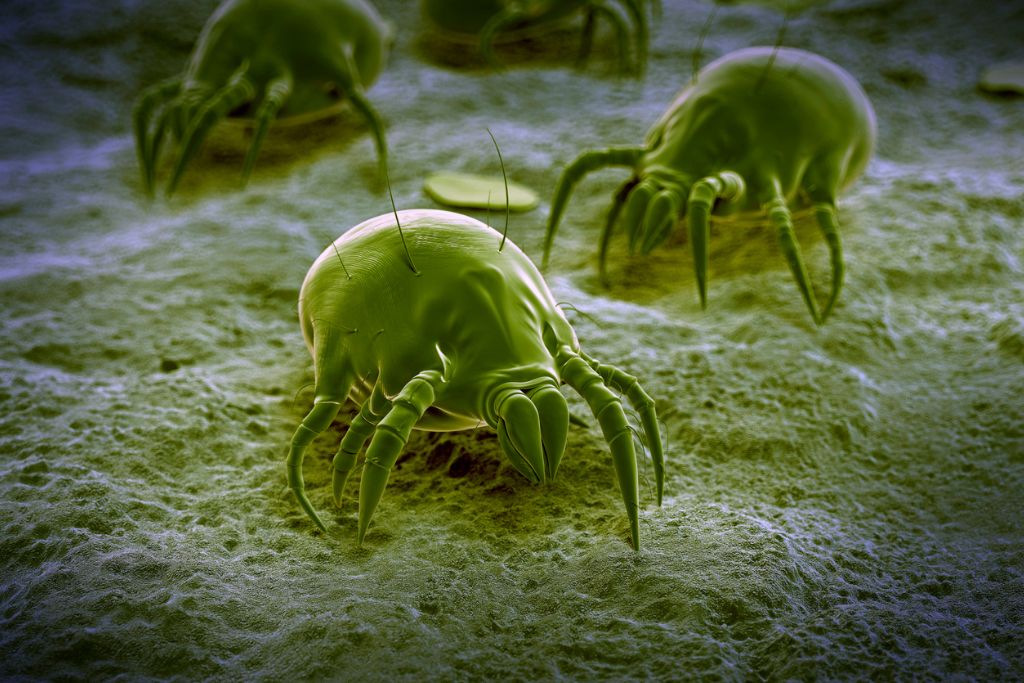
Even with the best prevention efforts, mites can still find their way to your leopard gecko. Don’t panic; various treatments can help you eliminate these pests. While home remedies can offer some relief, consulting a reptile veterinarian remains crucial for a proper diagnosis and treatment plan.
- Mite Sprays: Over-the-counter sprays can kill mites effectively. However, always read the label and consult your vet before using any product.
- Olive Oil: A thin layer of olive oil can suffocate mites. Apply it carefully, avoiding the eyes and mouth of your gecko.
- Soaks: A warm water soak can help loosen mites and provide relief to your pet. Keep the water shallow and supervise your gecko during the soak.
- Vet-Prescribed Medication: Sometimes, stronger treatments, like ivermectin, are needed. Only a vet can prescribe these medications.
- Enclosure Cleaning: Alongside treating your gecko, thoroughly clean and disinfect the enclosure to eliminate any remaining mites.
- Regular Checks: Watch your gecko after treatment for any reinfestation signs.
- Consult a Vet: A visit to a reptile veterinarian is essential for persistent or severe cases. They can provide a tailored treatment plan to ensure your gecko’s speedy recovery.
Cleaning and Disinfecting the Enclosure
Treating your leopard gecko for mites is just part of the solution. A clean, disinfected enclosure is crucial for preventing future outbreaks. Let’s follow the steps to ensure your pet’s home is as mite-free as possible.
- Remove All Items: Remove all decorations, hides, and dishes from the enclosure. This makes it easier to clean every nook and cranny.
- Vacuum the Substrate: Use a handheld vacuum to remove loose substrate and any visible mites. Dispose of the used substrate properly.
- Scrub the Tank: Use a reptile-safe cleaner to scrub all the enclosure surfaces. Pay special attention to corners where mites might hide.
- Rinse Well: After scrubbing, rinse the enclosure thoroughly with water to remove any cleaner residue.
- Disinfect: Apply a reptile-safe disinfectant and let it sit for the time recommended on the label. Rinse again after disinfecting.
- Heat Treatment: If possible, use a heat gun to go over the surfaces of the enclosure. The heat can kill any remaining mites or eggs.
- Wash Decor: Clean all decorations, hides, and dishes with hot water and a reptile-safe cleaner. Rinse and disinfect them, as well.
- Replace Substrate: Use fresh, mite-resistant substrates like paper towels or reptile carpets.
- Final Inspection: Before putting everything back, inspect the enclosure one last time to ensure no mites remain.
- Monitor: After cleaning, keep a close eye on your gecko and its enclosure for any signs of mites.
Handling Infested Substrates and Accessories
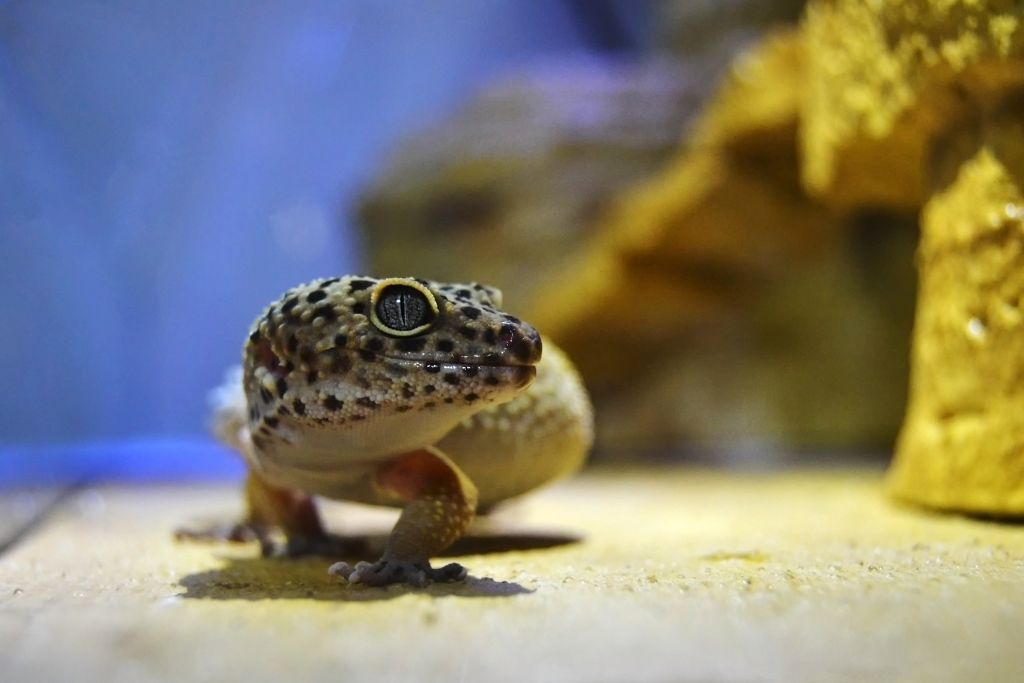
Dealing with mite-infested substrates and accessories is a crucial part of the battle against these pests. You can’t just focus on treating your leopard gecko; you must also tackle the environment. Here’s how to handle items that might be harboring mites:
- Dispose of Infested Substrate: The safest option is to throw away any infested substrate. Seal it in a plastic bag before disposing of it.
- Boil or Freeze Accessories: Small items, like hides, can be boiled or frozen to kill mites. Make sure to follow this with a thorough cleaning.
- Use Disinfectants: Use a reptile-safe disinfectant for larger items that can’t be boiled or frozen. Always rinse well after.
- Avoid Cross-Contamination: Keep infested items away from other pets and their enclosures to prevent the spread of mites.
- Regular Checks: After cleaning, inspect all items for any remaining mites before putting them back in the enclosure.
Care and Recovery Post-Infestation
After successfully treating a mite infestation, ongoing care is essential for your leopard gecko’s well-being. You should focus on:
- Monitor for Signs: Look for any signs of mites returning, such as scratching or skin discoloration.
- Regular Cleaning: Continue to clean the enclosure weekly to prevent another infestation.
- Vet Check-Ups: Schedule follow-up visits with your reptile veterinarian to ensure the mite problem is gone.
- Nutritional Support: Mites can stress out your gecko, so consider adding supplements to its diet for a quicker recovery.
- Ongoing Prevention: Stick to the preventive measures you’ve learned, like quarantining new pets and choosing mite-resistant substrates.
Disclaimer: The information provided in this article is for educational purposes only and should not replace professional veterinary advice.
Conclusion
Taking steps to prevent mite infestations in your leopard gecko is crucial for health and happiness. Early intervention makes a big difference, so always look for signs of mites.
Your gecko relies on you for its well-being, so be attentive and proactive in your care. A clean environment, regular check-ups, and a keen eye can help you avoid the stress and health risks that mites bring.
FAQs
Can Leopard Geckos Get Mites?
Yes, they can.
How Do Leopard Geckos Get Mites?
Through contaminated substrates, other infected pets, and sometimes even from the pet store.
How Do I Know If My Leopard Gecko Has Mites?
Look for signs like visible mites, skin discoloration, and unusual behavior like scratching or restlessness.

